Student of Radford University College, Accra,Ghana.Currently studying B.A Graphic Design. Graphic design is a wide course, varies from photography to Graphic design production to typography, etc.. its a great course!
Don't wanna be here? Send us removal request.
Text
COVID-19 PERSONAL EXPERIENCE
COVID-19, Coronavirus, is an infectious disease caused by a newly discovered corona virus. It is spread or transmitted through droplets generated when an infected person coughs, sneezes or exhales. These droplets are too heavy to hang in the air and quickly fall to the floor or surfaces. Some common symptoms include fever, dry cough, and tiredness, loss of smell and taste, headache and so on.
From a personal perspective on how COVID-19 affected me, I would say it did so in a lot of ways; education-wise, economically, physically, mentally etc.
The first confirmed COVID-19 case in Ghana was on the 12th of March, 2020. At the time, school hadn’t reopened but was in the process of doing so. Because of this, the president instructed that we were all supposed to vacate the school/hostel premises to our various homes, signifying all studies and academics to come to an end. We ended up studying online which brought so many pros and cons, which in the end the cons outweighed the pros. Bad internet restricted me from joining classes sometimes. I wasn’t understanding most stuff being taught because most of the courses were practical. Plus, I ended up missing some due dates for my assignments and had to beg or ask permission from some lecturers to finish them up because I had to balance house chores with school work because I was obviously home and couldn’t shun them because it’s my responsibility. Also, I had divided attention because of my siblings. I have a large family and it wasn’t helping me at all coupled with the online studies. In the middle of a class, I could be called to go on an errand or just have my little siblings running around for running arounds sake. It was one hell I had to go through.
COVID-19 also affected me economically. I manage my mom’s businesses for her sometimes and during the COVID-19 period everything was literally on me. My mom sells clothes. We weren’t having as much sales as we’d have if we weren’t on lockdown. Most people weren’t purchasing clothes because there were no new occasions. Weddings, funerals, parties and the rest had been halted too. I remember a friend mentioning to me that even if she bought clothes she had nowhere to take it to so she’d rather not buy, and this was really bad because there was not as much cash flow as there was without the pandemic and the lockdown.
My movement was also restricted because of the pandemic. We stayed home for almost a year. Months without stepping outside, no church services, parties, no visitations, etc. I was not allowed outside the main gate because of this and it got boring. I was just doing or following a particular pattern or routine every day for months; wake, house chores, eat, online class, sleep, and repeat. I got tired of the routine, I got tired of being online, I got tired of being stuck inside, and I got tired of everything at a point. It got so boring but there was nothing I could do about it. I wanted to stay alive.
My plans on travelling was tarnished. My family and I had plans on travelling during the Easter for the most famous festival of the year which was always held in Kwahu; “KWAHU OO KWAHU! This is like a ritual we always perform, going to my mom’s hometown for the festival, paragliding, hiking and having a lot of fun but this year we were restricted as the festival itself was even cancelled, prior to the president’s address to the nation. I mean we got really sad, especially my little siblings but we had to do our part, to help curb the pandemic in order to stay safe.
Despite the negative impacts it came with, I can never forget the good it did by bonding me with my friends and families. Even though my family is large, nobody really stays at home. My dad is a business man and is always travelling up and down because of the nature of his job. My mom on the other hand left home really early and came back really late, we could go a whole week without seeing her. My older siblings too hardly stayed home because they were working. Since the president announced the lockdown, we were all brought together. Our big family was back. I was seeing my dad more often, my mom and older siblings too. We would mostly gather around in the hall, watch movies or just discuss random stuff and it felt good. On the other hand I bonded well with my friends too because we were all online. Our old high school groups became more active, we were reminiscing on old times and laughing hard at old pictures. Though it was online and not physical, it felt good and real because I hadn’t spoken to some of them in years but we got bonded and more close because of the pandemic.
THE ARTIST WHO INSPIRED ME
EMMA HARDY
Based in London, Emma Hardy is well practiced in capturing the nuances of everyday life. Her images reflect an often unnoticed drama behind the scenes. Coming from a theatrical background and having worked as an actress herself before focusing on photography, Emma cites her fascination with people’s behaviour, the tensions, interactions and quirky humour, as a driving energy in her work.
Mainly self-taught Emma prefers to work with natural or available light, “I try not to impose much technique or too much of myself on my subjects.” As such, there’s a hallmark honesty to her work. Her images are infused with a believable sense of being, her portraits are intimate and unselfconscious. Tilda Swinton, Natalia Vodianova, Noomi Rapace, Michael Fassbender and Stella McCartney have sat for her, among others.
Emma finds inspiration in the chaos and unexpected beauty of life, the less seen moments in between. For each commercial client she challenges herself to bring her sense of authenticity to a necessarily constructed commercial brief, “I photograph with my heart engaged, and however manufactured an instance in photography, the test is to bring soul into commerce”. Describing her aesthetic as raw but tender, Emma finds beauty in imperfection, and polish in the detail of everyday life. And through her lens, the most ordinary moments seem steeped in romance and intrigue, as if her subjects are characters in a movie playing in her head.
WORKS
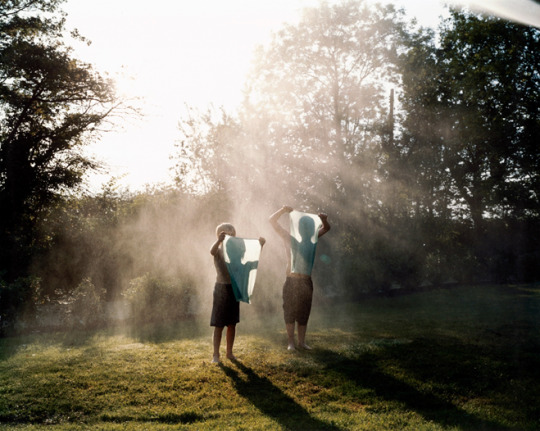

WHAT APPEALED TO ME
MOODS
Emma Hardy likes capturing the everyday nuances of life or everyday moods of life. Her images are natural and sometimes unplanned. Working with people’s behavioral manners, interactions, attitudes, etc. She tries to make her work as natural as possible and puts her heart into what she photographs, as she stated herself in a commercial brief.
COLOUR
Emma Hardy likes to work with natural or available light.
THE PLAN/THOUGHT PROCESS FOR THE WORK
The initial plan of the whole work was to create something like differences, get a picture of my sister and I if possible or do a clone of myself since we already look alike and are twins. This idea was to put across a message that conveys tolerance and bonding even though we’re two different people with different personalities but still twins. Later the plan changed because of certain unforeseen circumstances. This time I aimed at creating the same differences but this time with a ball, to one part would be edited as if it were night time or dark, and the other would be left with the natural light, to show daytime. This was to signify that the sun gives the moon light, and even though they are two different bodies, the needed each other. Same applies with my sister and I, each one of us has our own sides, but we need each other to be around. The final plan after a few criticisms from my lecturer was to do the Chinese symbol yin and yang.
The principle of Yin and Yang is that all things exist as inseparable and contradictory opposites, for example, female-male, dark-light and old-young. The two opposites of Yin and Yang attract and complement each other and, as their symbol illustrates, each side has at its core an element of the other (represented by the small dots). Neither pole is superior to the other nor, as an increase in one brings a corresponding decrease in the other, a correct balance between the two poles must be reached in order to achieve harmony. Personally, I feel this symbol best describes us as twins because even though we are opposites we attract and complement each other. We have tiny traits in each other. And at the core of one another, we are represented by each other.
SKETCHES, PINTEREST INSPIRATION, MOODBOARD
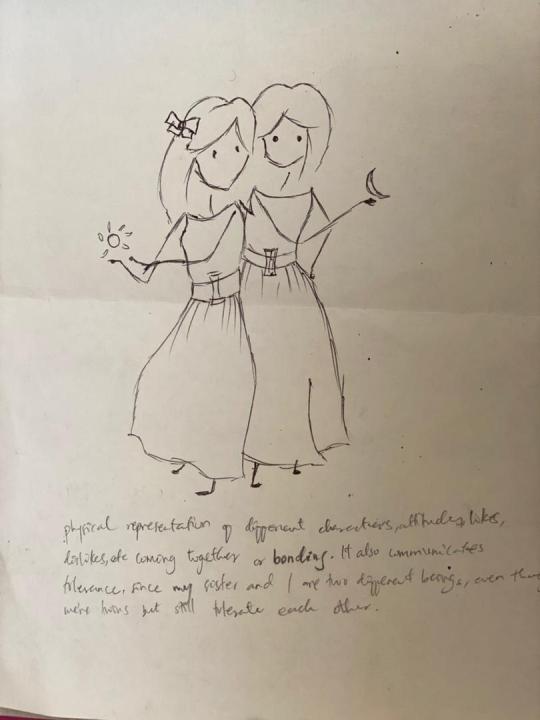
FIRST DRAFT WORK
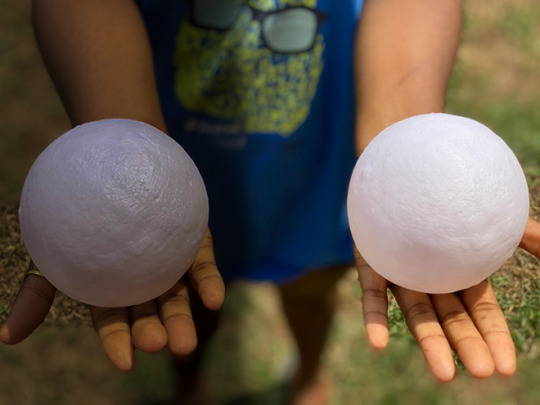
FINAL WORK
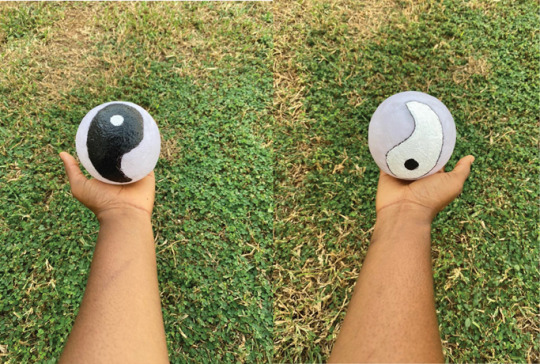
TITLE
FOUND THE GOOD INSIDE THE BAD.
I chose this title because the corona happening was a bad thing that hit us all, but even in that bad, there was a little good; me bonding with my family, especially my sister was the good.
3 notes
·
View notes
Photo
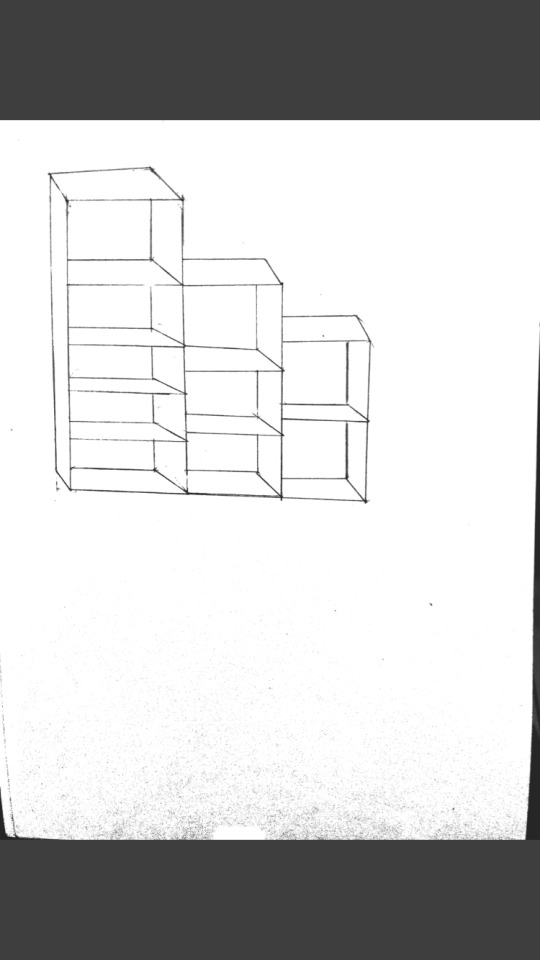



This is an assignment for my end of year exams for my Mathematics of Design and Raster Graphics class. the illustrations below are the plan and final works of my works, to see how it was done, a video has been uploaded to my YouTube channel. the link is down below.
https://youtu.be/GZQLRUomdME
1 note
·
View note
Text
Documentary Photography.
This is a write-up on documentary photography about a day in my life for my Basic Photography class. This project mostly took place in Tema Community 25, HFC estates, Shiashie and Accra Newtown on the 22nd of July 2020. The project includes only images to describe or tell a story about how I live a day in my life, it includes no text. The main subject is me, Doreen Akworkor Worbie, my twin sister, and few friends from school. The reason for the choice of these particular subjects is because the project was centered on me (a day in my life), which makes me the main subject or the focal point of the documentary. My sister was included in the project because I thought it would be interesting to add another character so as to create a bit of variety, and to eliminate any form of monotony. The few friends I was able to capture and include into my project or documentary was a great plus, since there is a pandemic and we were all supposed to stay safe. I chose a particular day where I would be kind of occupied with school work and other stuff out of my normal many boring days to do this project because I wanted to get more interesting pictures for my documentary. I had the chance to visit Accra, a quite interesting place in the country, since I was working on other projects or works, which means, more interesting pictures. Strangers appeared in my documentary, and that’s an interesting part too because it didn’t look forced or planned, thy just happened to appear and this made it quite interesting too. I used my IPhone 6s for this project, coupled with Lightroom for the editing of the pictures. I mostly captured scenes, greenery and movement in my projects because I wanted to give it some life, not to make it boring.
Below is the link to the final turn out of the magazine that was published on issuu.
https://issuu.com/worbiestuff/docs/photo
https://youtu.be/0qvE18ODQUM
Above is the link of a tutorial video I posted on my YouTube channel on how I went about the design of the magazine.
0 notes
Photo

https://youtu.be/ySQQSDh7RYo watch my first YouTube video on how i made this poster.
0 notes
Photo

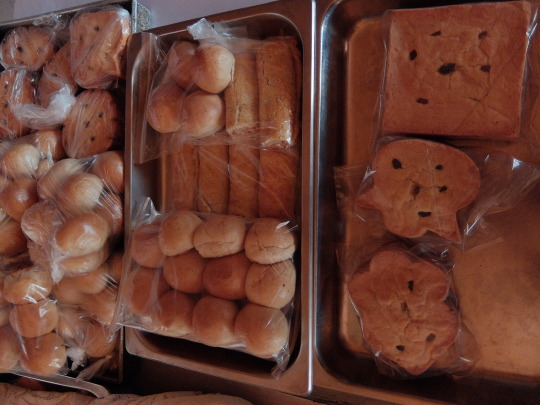
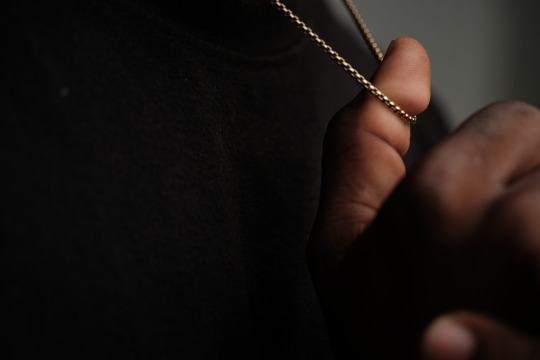

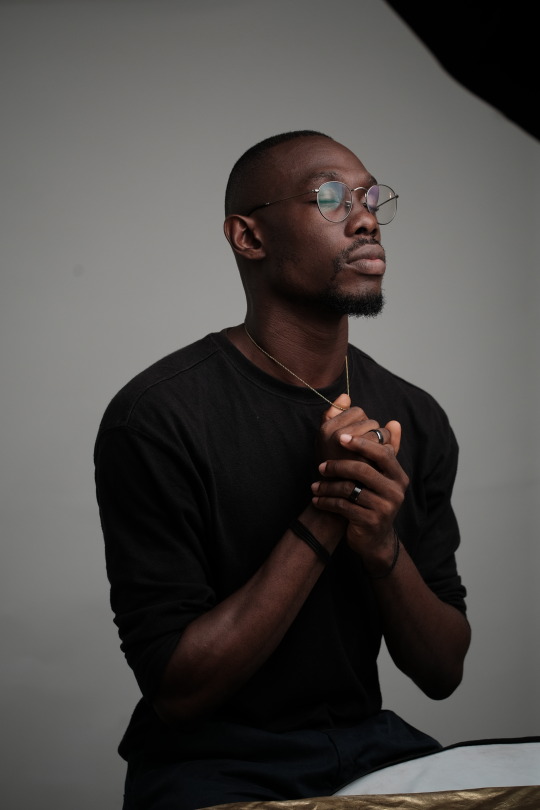


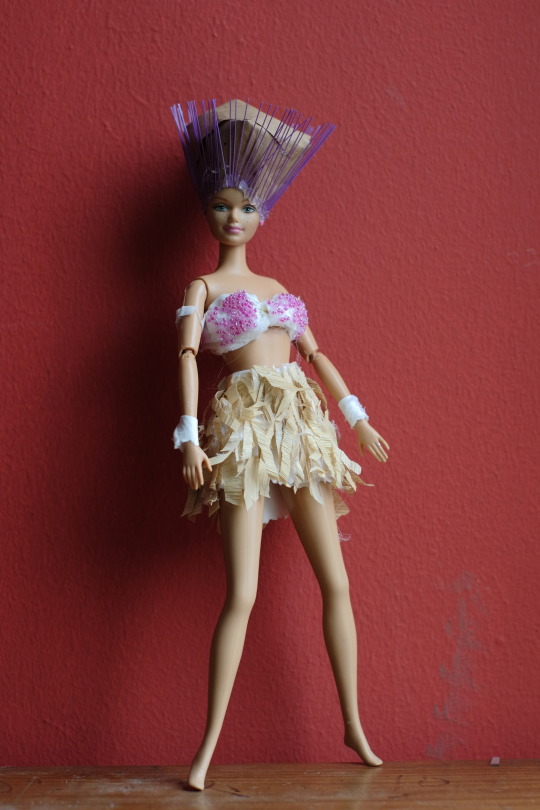

These pictures were made and copyrighted by @Nanaresh (nanaresh.wordpress.com).
The above pictures were taken with a standard lens or a normal lens (50mm, 85mm, 100mm). A normal lens is a lens that reproduces a field of view that appears "natural" to a human observer.
0 notes
Photo


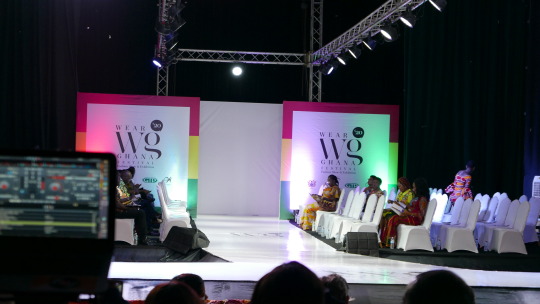


The above pictures used for this project was made and copyrighted by (@nanaresh.wordpress.com) Used by permission.
These pictures were taken with a wide angle lens. A wide angle lens is any lens with a short focal length and a wide field of view. This lens allows the camera to capture much more of the scene than a normal lens can, making it great for architectural and landscape photography,which is obvious from the pictures above.They are mostly 35mm and wider.
0 notes
Photo



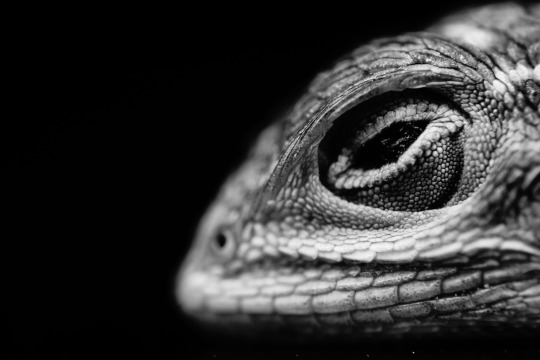



The above pictures used for this project was made and copyrighted by (@nanaresh.wordpress.com) Used by permission.
These pictures were taken with a macro lens. Macro lenses are used for extreme close-up photography, usually of very small subjects and living organisms like insects. Macro lenses maintain the details of the objects and give us the closeness of it.
0 notes
Text
EVERYTHING YOU NEED TO KNOW ABOUT A CAMERA.
· The smaller the pinhole, the lesser the amount of light passing through, producing a much darker image.
· When a ray of light hits a lens, it converges at a point.
· Light enters the camera through the lens.
· Most lenses have multiple glass elements to focus the light and the beam on the film or the camera sensor, which is located inside the body of the camera.
· If you turn the zoom ring on a zoom lens camera, you’re going to be moving certain elements backwards and forwards to change the magnification of what you’re capturing on the sensor.
· In the middle of each lens is the aperture, with multiple blades. It can either open up or shut down, allowing more light to enter or less light to enter.
· When the aperture is opened, light is able to enter and hit the sensor from different angles and creates a shallow depth of field. Stopping the aperture creates a really small opening, and light is only able to enter into the lens directly from the front from one direction and therefore we get a deeper depth of field, meaning the subject and background will be more in focus.
DIGITAL SINGLE LENS REFLEX CAMERA
· The DSLR camera is a digital camera. This means it has only one lens. It is also known as reflex because light enters from the front, hits a mirror, bounces back unto a prism and allows one to look through the view finder (located up above the lens) because of the reflex.
· The mirror gets out of the way each time a picture is taken. As you take a picture, everything goes black and then comes back to normal.
· Digital cameras have a digital chip that has photo-sensitive material on it and allows it to trap red, blue and green colours over the course of many different photographs.
· The camera takes all of this information, breaks it down, and creates a file made up of millions of individual pixels in separate colours.
FEATURES OF LENSES
· Focal length
The first and foremost property of a camera lens is the focal length. This is described as the distance from the point where rays of light converge unto a point.
· When talking about lenses, we’re talking about the imaging plane and the optical center point.
· Focal length determines the field of view. This is the angle your shot covers. Shorter focal length means wider field of view and longer focal length means narrower field of view.
· Field of view is determined by both the focal length and the sensor size.
· Normal lens delivers an image that’s natural. For photographs and TV/web, a normal lens is equal to that of a diagonal dimension of a sensor (43mm)
· According to ASC, for cinema presentation, because the viewer is watching from a big screen, far away, the normal lens will be twice the diagonal dimension.
· With normal lenses, there is not much need to be absolutely precise.
APERTURE/IRIS
· The aperture restricts the amount of light that travels into the camera system.
· A smaller aperture means a sharper and deeper focus.
· We measure the size of an aperture by F-number, F-ratio, and F-stop. The F-stop is a dimensional number, that is, the focal length divided by the diameter of aperture.
PRIME LENSES VERSUS ZOOM LENSES
· A prime lens is a lens with a single focal length while a zoom lens is capable of a range of focal lengths.
· Cheaper photography lenses are called varifocal lenses, that is, focus changes as focal length changes.
· More expensive lenses are called parfocal lenses, that is, focus is maintained throughout focal length range.
DIFFERENCES BETWEEN PRIME AND ZOOM LENSES
Most of the time the differences are between these factors; quality, ease of use (flexibility) and cost.
· Prime lens is one focal length, a precise design to suit just that one specific task while zoom lenses require sacrifices in terms of design and cost in order for it to function throughput the zoom range.
· Zoom lenses are easier to use, as compared to prime lenses.
· Prime lenses are cheaper, and have a better quality that zoom lenses.
0 notes
Text
Double exposure and its origin.
In photography and cinematography, a multiple exposure is the superimposition of two or more exposures to create a single image, and double exposure has a corresponding meaning in respect of two images. Also, it is the repeated exposure of a photographic plate or film to light often producing ghost images.
Some of the first double exposure photos emerged during the 1860s as another source of revenue for photographers. To give their business a boost, they discovered how to make a portrait subject appear twice in a frame, as if they had an identical twin. In each of the pictures, the person was striking a different pose. o capture these now-vintage images, photographers would snap a picture of the subject in one position. Then, they’d have to move into another pose before the following photo was shot. Rotating lens caps and special plates (the precursor to film) were also part of the process. The result was a playful and surreal approach to early photographs.
As photographic technology improved, so did the ability to create double exposure photographs. Nowadays, creatives have a choice when producing multiple images: analog or digital. We’ll hear how our favorite double exposure photographers create their alluring images.
Analog Approach to Double Exposure Photography
The analog double exposure method is a continuation of historic techniques. Everything is created in-camera, meaning that images are manipulated by exposing the film multiple times and not advancing to the next frame; this creates the superimposed look. There are different approaches to doing exactly this, but the results are the same—curious compositions that are full of emotion. There is a simplified step by step method on how to create a simple double exposure image.
Steps
1. Open the image you want to use. Use the quick selection tool and make a selection of the image you chose.
2. After selecting, right click the image and click on feather. Enter 0.5 and click ok.
3. Duplicate the model layer, (ctrl+J) and rename it. Delete the background layer.
4. Click on the adjustment panel and choose solid colour. Go with white. Bring the model layer to the top and rename the solid colour ‘background’.
5. Open the second image and drag and drop it in the first image. Rename it and change the opacity to 50%. Resize to fit by holding down your shift key and using your mouse to drag one of the corners of the image. Press enter if you are satisfied with the results.
6. Select the model layer, press control and click once on the model layer to load the selection. Select the second layer and add a mask layer. Make a copy of the model layer and drag it on top of the rest of the layers.
7. Change the blend mode from normal to lighten and reduce the opacity to 50%.
8. Apply a layer mask. Select the layer mask, click on the brush tool, with opacity at 40 and black as the foreground colour, brush off the parts of the model you want to see.
9. Select the second image, make sure you’re on its layer mask and start brushing to reveal the face of the model.
10. Select the background, double click on it to reveal the colour swatch and sample a colour from the image and press okay.
11. Select the second layer and duplicate it. Select the layer mask and delete it. Now change the blend mode to lighten.
12. Apply a layer mask (alt+ layer mask), select the top image or layer, go to adjustments and click on solid colour. Change the blending mode from normal to multiply and reduce the opacity to about 20%.
13. Press alt+ ctrl+ shift+ E to desaturate or go to image, adjustments, then desaturate. Change the blend mode from normal to soft light and change the opacity to about 30% and that is it!
Here is a simple image of a double exposure piece.

WORD OVERLAY
An overlay simply provides the ability to superimpose one or more text elements over a video stream. Overlays are basically an image or texture that is added as an additional layer to your photograph using an editing program. Most often this is done by combining multiply and screen blend modes. The parts of the top layer where the base layer becomes lighter and the parts that are dark become darker.
Steps for creating a word overlay
1. Open the image you want to use for the work. Duplicate the layer and fill with solid colour from the adjustment panel.
2. Move the solid colour layer below layer one. Select or click on the text tool and choose your font options. Select your type colour, preferably white, so it is easier to see what you are doing.
3. Type your text by clicking inside the document. Press enter or click on the check box.
4. Select the type or font layer and drag it below layer one.select layer one, then click on the menu icon at the right corner of the layers panel and select or choose create a clipping mask.
5. Your image will appear in the text. Resize it by selecting the text layer first, or else it becomes impossible. Go to edit, then free transform and work around it till you get your desired results!
Here is a simple image of a word overlay

0 notes
Text
Hi lovely people, we’re going to be learning a few Photoshop tricks. We’re going to be looking at just two but very important topics today; colour and adjustment layers and retouching.
with colour and adjustments we’re going to be looking at vibrance and hue, before moving to retouching. let’s get started alright?
STEPS
1. first we’re going to open any image of our preference and we’re going to find the adjustments layer and we’re going to click on it.
2. we’re going to look for the ‘v’ shaped button (vibrance) and click on that as well.
3.you can drag or the sldie the button to any prefernce you want, depending on what works for you. we use vibrance because it makes colours look like natural without torturing it, it just kinds of pops it out. here is a before and after


check them out!
next we’re going to look at hue/saturation.
STEPS
1. we’re going to open a picture as well2.
2. move to the adjustment panel and click on the button that looks like a fence( it is the first to your left)
3. We;re going to drag the hue button eeither to the left or to the right to change the colours. it is very visible that this works for just a specif colour or the the top of the object or picutre. We’re going to chnage this by clicking on the Master tab, to display a drop down mwnu.
4. choose any colour you want to change and slide the hue button to get your preferred results. You can change the saturation to fit the colour too.
here is an comparison below.

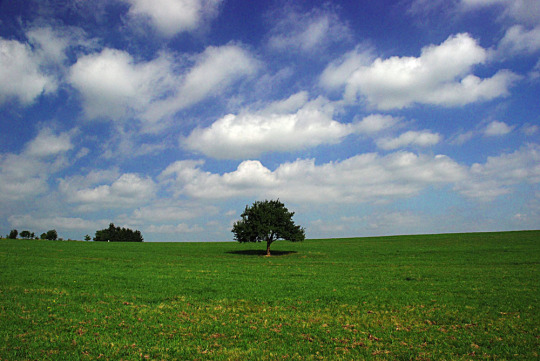
we’re moving straight to retouching.
STEPS
1. We;re going to be using the spot healing brush for this job. We’re most definitely going to open a picture we want to work on.
2. Click on the spot healing brush (left click and then click on the spot healing brush)
3. we’re going to check the box for ‘sample all layers’ and we’re going to reduce the hardness all the way to zero.
4. you can reduce the brush size to any preferred size, 50 works best for me so you can try that too.
we want to try as much as possible to make the retouching looks very real and not too kind of enhanced. in view of this we’re going to reduce the opacity a bit to the left, so it looks kind of real or human.
compare these pictures.
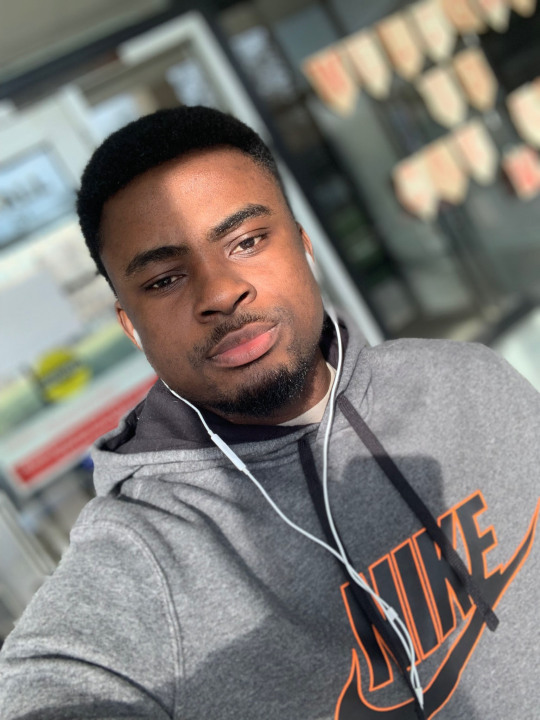
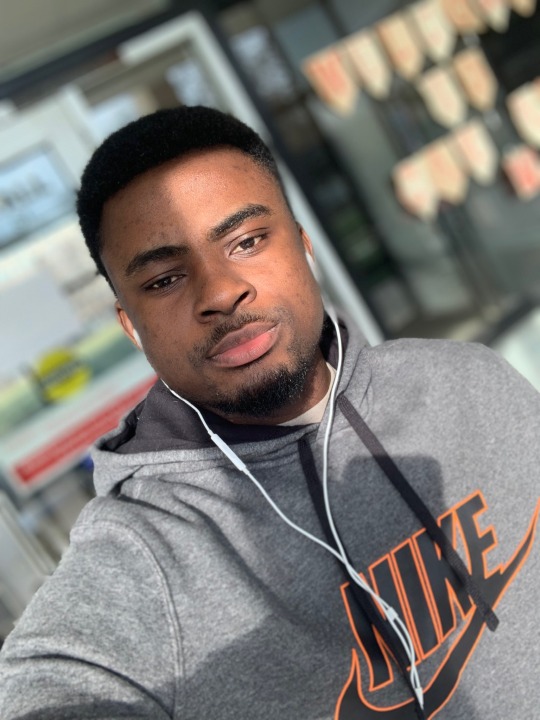
this will be all for today, i hope they are useful!
0 notes
Text
TIPS ON PHOTOGRAPHY
Hey guys, back once again over the weekend I had another photography assignment and I’m glad to share with you all.
I was supposed to watch some YouTube videos and make notes of all I learnt. As I made notes, I was to cast my mind to my surrounding and begin to see how objects will look beside others as in size, colour, feelings, etc. and describe how I understand seeing especially in the artistic sense I was also to describe the various elements of art and use my camera to make images that will be interesting and worthy of an exhibition. I was asked to make 2 interesting images per element and organize the images under their respective headings and describe how I made it.
Let’s dive straight in!
Photography is not just a technical exercise, but an art, application and practice of creating durable images by recording light. Owning a camera doesn’t make you a good photographer and at the end of the day, it still narrows down to being an art. Dorothea Lange said that a “camera is a tool for learning to see without a camera”. Having the camera doesn’t necessarily mean you automatically get to see great subjects and shoot “OMG’ (oh my god) pictures. It requires perfection through a lot of practical work or knowledge, personal skills and creativity-which is best described as a combination of inventiveness, imagination, inspiration and perception. Bryan Peterson also explained that to advance your personal vision, you must really practice.
We have to learn to see what is around us so we can express it in artistic ways. We’ve to train our minds to see something new and different even at places we’ve been before or things we’ve seen before. As Ernst Haas said- “I am not interested in shooting new things, I am interested in to see things new”. This short statement makes a lot of sense. We’ve to be interested in training our minds to see things in a way that people think is abnormal, in a way that even when we are paired with people in the same geographical area, we take “fire” pictures that will make or partners wonder; wow, how come I didn’t think of that or see that?
Recognizing good light is all photography is about. Hence the meaning of photography being light writing. Sometimes we just have to recognize how a particular light, either natural or artificial, controlled or spontaneous falls on a building or hits city to be able to get a good shot. We can’t get good images by riding with the bus every day or requesting an Uber everywhere we go, sometimes we need to take the risk and walk, even if not with the mindset of getting a few things photographed but just to interact with nature, and we’ll be surprised that we’ll end up taking much more photographs than we planned on doing.
Photography is not about the content of the photograph or picture, but about the compositional arrangement. Composition can be described as the arrangements of elements used. It means paying attention to what will be photographed, how it is placed in relationship to other objects in the image and how well the subject matter is expressed.
Elements of design should be your foundation for how to learn to see. They include;
· Line
· Colour
· Value
· Shape
· Form and
· Texture.
SEEING ESPECIALLY IN ARTISTIC SENSE.
Seeing in artistic sense means a lot to me. Seeing artistically, to me means that when I look at something, I don’t just simply look at it, I don’t just look, I look and ‘see’. I try to make a connection between stuff and elements that look or seem unconnected. It is how I look beyond ordinary objects and just using what I already know to create something new. More like using a ‘third’ eye. Seeing artistically to me means that going somewhere people will think is abnormal just to create new photographs or trying out new things people might see to be weird.
ELEMENTS OF ART
As mentioned earlier, the elements of art should be the foundation on how to see. It is simply referred to as the building blocks of art. They include line, shape, form, texture, colour and value.
· Line: a line is referred to as a mark with length ad direction. There are various types of lines and they have been listed and explained below.
--Line variation: this means using a variety of thin and thick lines or varying the weight of a single line to create interest.
--Contour lines: contour lines are lines that follow the outer edges of an object, like an outline.
--Blind contour: drawing contour lines without looking at the paper and even though they may look kind of humorous or funny, the drawings actually turn out to be someway somewhat artistically interesting.
· Value: this refers to the relative lightness or darkness of an object.
· Color: we all know that light source is needed to see colour. Basically, colour is seen by reflecting light on an object.
--Hue: hue refers to the name of a colour; red, yellow, green, black, etc.
--Intensity: the brightness or dullness of a colour is referred to as intensity.
· Space: the area around, above or inside an object is referred to as space. There are two types of space
--space that involves depth.
--space that involves the shape of area.
Shallow space
This is space that feels cringed, feels flat. There is not much depth in the artwork. Objects are close together without much room to move around.
Deep space
With deep space, there is a lot of depth in the artwork. Objects tend to disappear far in the distance.
Positive space
This refers to the areas of focus or the most important parts of an artwork.
Negative space
This is the space around areas of focus-usually the background of an artwork.
· Shape and Form:
--Shapes are two dimensional, having height and width.
-- Forms are three dimensional or have three dimensions, height, width and depth.
Geometric shapes
These are mathematical lines or shapes or forma often with hard, sharp edges. Circles and spheres are exceptions.
Organic shapes
These are natural or free form shapes, lines or forms often with curvy, soft edges.
· Texture: the texture of something or texture refers to how the object appears to feel. There are two types of textures;
--Actual texture: this refers to texture you can actually feel. With this type of texture, If the object looks rough, it feels rough too.
--Visual texture: this kind of texture refers to texture you can see but not feel. It I also known as implied texture. With this type of texture, the object might appear rough but smooth to touch.
PICTURES DEPICTING THE VARIOUS FORMS OF ELEMENTS OF ART
LINE
Figure 1
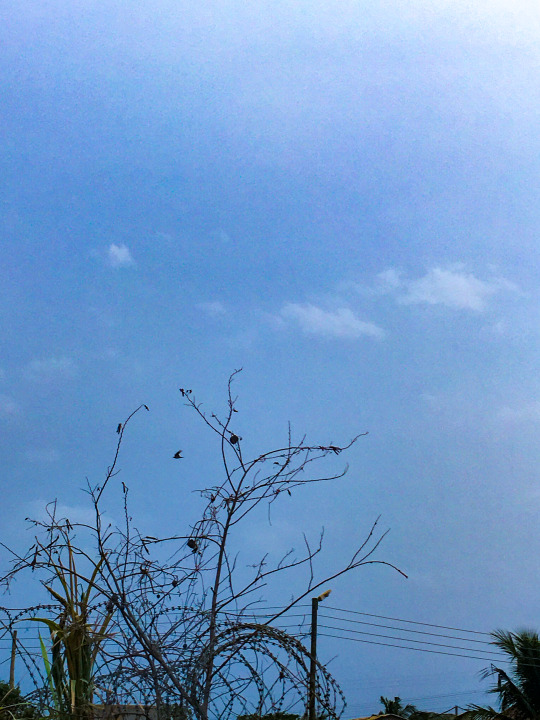
I find this picture depicting or showing lines because of the various kinds of lines that can be identified in it. The tree or bush has some kind of thin and thick lines in there, we can also see spiral lines from the razor wire that has gotten entangled with the bush. This is a picture I took on my way to buy porridge on Friday morning at around 6:30 am with my iPhone 6s back camera, 4.15mm with a shutter speed of 1/340 sec, aperture, f/2.2 and ISO 25. I edited this picture using Lightroom.
FIGURE 2
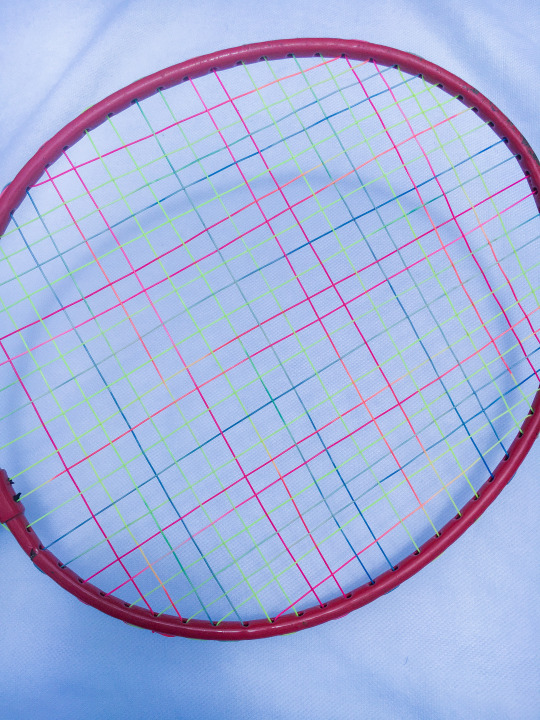
This is also another photograph that depicts line. There are horizontal and vertical lines that can be seen in the above photograph and these are forms of lines. I found this old racket in the store room at home and decided to take a picture of it with my iPhone 6s back camera, with a shutter speed of 1/3700sec, aperture being, f/2.2 and ISO 25. I edited the picture with Lightroom.
COLOUR
FIGURE 3

I ordered these mini cakes from Chafty Catering and decided to take this picture, not for any reasonable purpose but just because of how the colours looked so vibrant and appetizing.
The above picture is ideal to depict colour because so many different colours can be identified from the above picture. We’ve the colour of the mini cakes being brown, the marshmallows white, the skittles which come in different colours like red, blue etc. captured this image with my very own IPhone 6s back camera, with shutter speed being 1/300 sec, aperture, f/2.2 and ISO 25, also edited with lightroom.
FIGURE 4
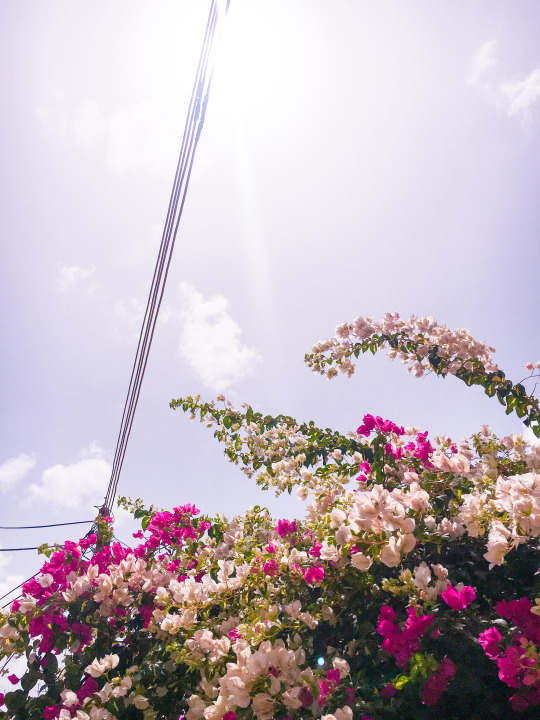
This is a picture of a tree right opposite my house, as to say my neighbor’s house. I took this picture because personally I love nature, and I also was in love with how the sun hit the tree for it to bring out its colours. The way the rays passes through the ple wires is another besuty to behold, but that is just a plus, not where the attention actually is. This picture depicts colour in the sense that, we’ve the colours of the flowers being a shade of pink which is known as ‘fuchsia’ and we’ve some kind of off-white or creamy colour and we also have green, for the leaves of the plant! We’ve the pole wires to be black, and the blue skies, we’ve the clouds being white too. In all, we have about 6 colours in the photograph. This also was captured with my iPhone 6s camera, with shutter speed 1/190000sec, aperture being f/2.2 and ISO 25 and edited with Lightroom.
VALUE
FIGURE 5
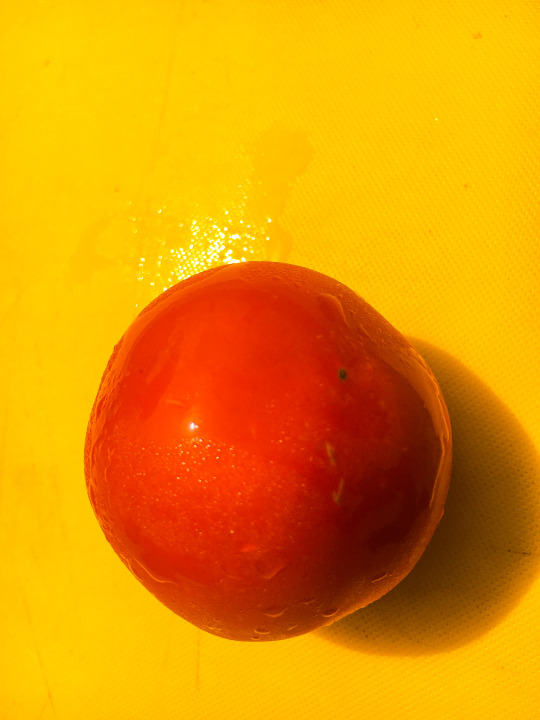
This is a picture of a tomato I took straight out of the refrigerator and put on a yellow chopping board directly under the sun. I chose to use this photograph for the depiction of value because we all know the definition of value to be how bright or dark an object is. Again, we all know red and yellow to be very bright and loud colours, hence, using it to depict value makes a lot of sense. This picture too was captured by my IPhone 6s back camera with a shutter speed of 1/13500 sec, aperture being f/2.2 and ISO 25, edited with Lightroom.
FIGURE 6

This is a picture of the same racket I found in my store room, but this time held towards the sun. I chose to use this picture to depict value because a part of the image depicts a bright side, thus, the sun and another side depicts a darker side. Per the explanation of the element of art; value, this picture is ideal. This picture was also taken with my IPhone 6s camera, with shutter speed being 1/26000 sec, aperture, f/2.2 and ISO 25, also edited with lightroom.
TEXTURE
FIGURE 7

I decided to take a picture of my old purse and use it to depict texture. Texture refers to how an object appears to feel, and there are two types; actual and visual. This old purse can be used to depict visual because it appears to be rough when looked at but smooth when felt. This was also captured with my iPhone 6s, with a shutter speed of 1/4500 sec, aperture being f/2.2 and ISO 25. This was also edited using Lightroom.
FIGURE 8
This is a picture of a terrazzo wall in my house. I took this picture to depict actual texture because my terrazzo wall looks rough from afar, and is rough when felt too. Captured this with my iPhone 6s. With aperture being 1/1100 sec, aperture, f/2.2 and ISO 25. I edited this with Lightroom.
SPACE
FIGURE 9
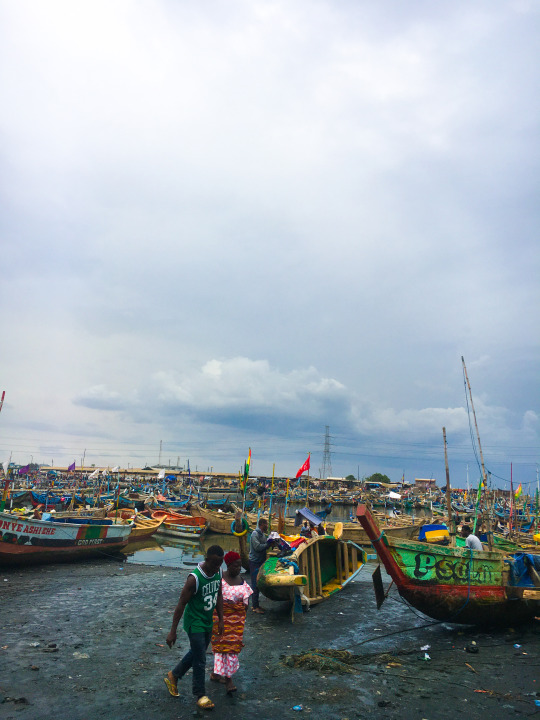
This is an image I captured on my first visit to new town with my mum, to buy some fresh fish. Accra New Town is a town in the Metropolitan district, a district of the Greater Accra region in Ghana. I took this picture with no motive but only because that was my first time visiting the place. I had never seen so many canoes in my life too, and that was another minor reason why I took the picture. I decided to use this picture I captured to depicted space (deep space) because the picture has a lot of depth and the objects, i.e. (the canoes, the fishermen and fishmongers) tend to disappear into the horizon. Same IPhone 6s for the picture, with shutter speed of 1/200 sec, aperture, f/2.2 and ISO 25 and edited using Lightroom.
FIGURE 10

This picture is a composition of a glass and an orange. This composition is intentional, I had the mindset of making or creating something that could depict shallow space. And I think it works. Shallow space refers to space that feels cringed or flat. If an artwork is shallow, it means there isn’t much space to move around, hence, objects are close together. In this composition, there isn’t much space to move around since the view ends right where the orange is. Any means of trying to look farther than the orange is not possible. This was taken with my iphone 6s. with shutter speed of 1/290 sec, aperture f/2.2 and ISO 25, also edited with Lightroom.
SHAPE AND FORM
FIGURE 11

These pigeon holes depict shape. Picking one of these pigeon holes, they are rectangular in shape and putting all of them together or picking them randomly, the still kind of form a shape. Taken with my iPhone 6s, with shutter speed being 1/2500 sec, aperture, f/2.2 and ISO 25. Edited using lightroom.
FIGURE 12
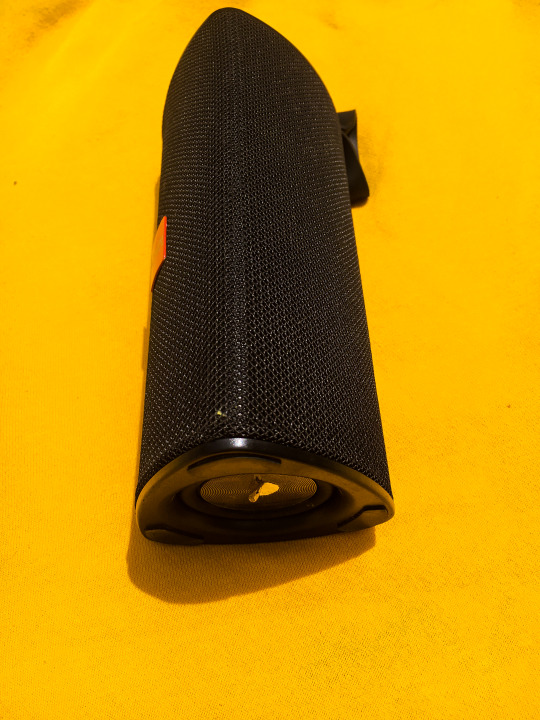
This is a picture of my portable Bluetooth speaker I use in school. I’m a music lover so I guess it makes a little bit of sense. Well, I photographed this mini speaker because I thought It would be ideal for a form, since forms are three dimensional; height, width and depth. I captured this image with my iPhone 6s again, with a shutter speed of 1/2100 sec, aperture, f /2.2 and ISO 25 and edited using Lightroom.
DOREEN AKWORKOR WORBIE
PHOTOGRAPHY II
1 note
·
View note
Text
Wohoo! hi guys its been a long while! hope y’all are safe and protecting yourselves against COVID-19. let’s sanitize more and wash our hands frequently to avoid contracting the disease but above all lets STAY AT HOME. Anyways, since schools have been closed down because of the pandemic, my school moved to we having online classes to prevent us being idle while the whole word takes a major turn. The questions are below. I took my time to research and watch series of videos to help me come at my answers and conclusions. I hope they are useful to you too.
1. Write in your own words a brief history of photography and the major proponents of the practice.
2. Will you regard photography as an art or science?
3. How is photography relevant to human history?
1.
· Photography was born from the camera obscura invented in the 1830’s but in some 200 years ago the camera developed from a box that took blurry pictures until around 11th century when obscura was invented by Iraqi scientists. Photography captured a slice of life, it told something about the person or whatever that was captured. Examples are the picture of Monna Lisa, the night watch and so on. At first, photography was either used an aid in the work of a painter or followed the same principles painted followed. According to Ken Whitmire, photography was inherited from painters a 100 or 200 years ago.
· The camera obscura manuscripts and principles on how it works was invented in 1021 by Ibn al-Haythan, known as Alhazen. The camera obscura is a dark closed box with a hole at one side of it. It is stated that around 1553, that Giovanni Battista Della Porta was the first to use the camera obscura or wrote an essay on how to use it.
· Shortly before 1800 (exact date not known), Thomas Wedgewood, one of the first people who tried to use the concept and make it permanent. He used silver nitrate on paper and white leather but achieved better results with white leather.
Thomas was the son of the famous Josiah Wedgewood, the potter, and he wasn’t all that successful into making the image into light. He would get the image but it would get destroyed because it was not fixed like how it is done in the darkroom.
· The first permanent and oldest surviving photograph, was taken by a French inventor Joseph Nicephore Niepce, it records a view from the “Window at Le Gras”. The exposure lasted for eight hours. Niepce came up with the idea of using petroleum derivative called “Bitumen of Judea” to record his camera’s projection. In the next few years he partnered with Louis Daguerre and they started working together till Niepce died. The first ever picture to have a human in it was Boulevard du Temple by Louis Daguerre, taken in 1838. The first known picture with a 10 minute exposure of a man having his shoes polished.
· Finally, after decades of improvements, cameras began to earnest with Eastman’s Kodak’s cameras. In 1888 he sold his first commercial camera. It took only black and white shots.
· In 1939, Sir John Herschel came up with a way of making the first glass negative. The same year he coined the term photography, derived from the Greek word “fos” meaning light and ‘grafo” meaning write.
· Colour photography was explored throughout the 19th century but wasn’t really viable till the middle of the 20th century. Several methods were patented by Louis Ducos du Hauron and Charles Cros. The first colour photo, an image of a tartan ribbon was taken by James Clerk Maxwell, a famous Scottish physicist.
· In 1939, WWII helped shape photography. The Wehrmacht recruited photographers for its propaganda campaigns. As a propaganda tool, the camera became a weapon in the hands of soldiers.
· In 1948 Polaroid introduced an instant image development invented by Edwin H. Land. It is a type of camera which uses self-developing film to create a chemically developed print shortly after taking the picture.
· In 1991, first professional camera was announced by Kodak professional DCS.
· In 2000 the first camera phone was invented by Sharp Corporation.
2.
The technicality of producing an image is science but the composition and generating a beautiful image is art. Even though the science of photography is the following of series of steps when editing and making adjustments and the organized body of knowledge and principles, I think photography is an art because art is an expression of feelings brought into words, pictures (photography) or acting. Or art is something that is created with imagination and skill and that is beautiful or that expresses important ideas or feelings. This definition shows that photography possesses everything to be an ideal medium for creative expression, thus, art.
Photography is an art because it is a continuation of the art of drawing or painting. Photography is just like painting in the sense that although it does take accurate pictures of reality it allows for some modification. Photography captures a slice or a moment of life in every photograph that is taken and all of this symbolizes art. How certain people did certain things and other iconic photographs. Pictures of people like Monna Lisa, the snake river etc. all show art.
As any visual art form, photography allows for an expression of emotions. It exploits vulnerabilities of the human visual perception and can make us experience emotions that move us and compel us to do things we otherwise would not even think of. It is Jessica Lange’s series of photos showing inhumane conditions on American factories that made the lawmakers enact Child Labor Law, it is Carleton Watkin’s landscapes that were the reason for Abraham Lincoln signing the first federal government act to preserve a part of nature for the common good now known as Yosemite National Park.
Photography requires perfection through practical knowledge, creativity and personal skills. Practical knowledge is knowledge that is acquired by day-to-day-hands-on experiences. Practical knowledge is gained by doing things. If you want to be a good manager for example, one needs several years of experience, same applies to photography. One needs to practice to become a pro at photography. Speaking of creativity, it is the use of imagination or original ideas to create something, thus, what a photographer plans on bringing out with his photo, that is the message he or she wants to convey to whoever his audience is, the theme, the story, the poses etc. The science part of photography or the body of knowledge and principles and series of steps don’t guarantee one creative. Theoretical knowledge, which is gained for example by reading manuals is not sufficient since every art requires practical knowledge.
Photography is an art because of the fact that it does take an artist’s eye to find a great subject for digital photography. The photographer conveys messages (photos) through aesthetics; a set of principles concerned with nature and appreciation of beauty. It deals with questions of beauty and artistic taste. Questions like;
· How long did it take me to plan this photo shoot?
· How does this photograph make me feel?
· What’s the lighting like in this particular photograph? Is it artificial or natural? Controlled or spontaneous? A photographer answers these questions by means of art and not by a series of steps or the acquisition of knowledge by reading a manual or experimentation and observation. Managing the job requires certain skills which are personal possessions.
The above listed and elaborated points are the reasons why I strongly think photography is an art.
3.
Photography is relevant to human history in a sense that it is part of our legacy. Photography freezes moments of our lives which pass unremarkably and which seem to have little importance to us at that time. The significance however, may be for others who search for the person we once were or the places we once knew. They can be small pieces of jigsaw that completes the larger picture of our lives.
Furthermore, photography is relevant to human history because it aids in communication. People all over the world can’t read and write and the few that can comprehend more than 250 words per minute. As a result, photography has taken a leading role in communication and is very inevitable.
Photographs play a vital role in human history by connecting us to our past. They remind us of people we’ve known and still do, the places we’ve been to, the feelings we’ve felt; love, pain, hatred, fear etc. and they tell our stories too.
Photographs can be a vital memory clue. They help us know who we are; the type of fashion or fashion sense during the old days, the kind of vehicles or other technology depicted. They also tell where we’re from, where we’re headed, the people we came from, our ancestors etc.
Another relevance of photography to human history is information. Some photographs contain very vital information about very important things and places or people. Photographs disseminate information about humanity and the society. The vital information was mostly recorded at the back or the reverse side of those old or ancient photographs and they mostly contained symbols, marker’s marks etc. an example is the carte de visite photograph from 1883. The scan of the back reveals information about the image.
Photography is relevant to human history because it keeps history alive. Most of us weren’t alive or born when certain photographs were taken but through these same photographs we’ve been able to learn about the history of particular people that were captured, particular iconic photos, why they were captured and a whole lot. For example, I wasn’t around the first permanent photograph ever (Boulevard du Temple by Louis Daguerre, taken in 1838) was taken but thanks to photography keeping history alive, I’ve been able to learn about it and see the actual picture and the photographer who captured it even though I wasn’t around to witness it. Photographs make us see and believe history.
Photography helps us understand human history and culture and this is also another reason why photography is relevant to human history. It is much more than a simple record or a snapshot. It speaks to the best and most generous part of our human nature.
Everything we do and everywhere we go is recorded because they matter. Some moments and experiences cannot be forgotten and so we keep them through photographs.
Basic Photography
DOREEN WORBIE.
0 notes
Photo

The next project was to create a photo book on any theme of our choice, weddings, engagements, outdoorings, parties etc. i chose the theme weddings and worked my way around it. this is just the from page of the photo book which i designed myself. i didn’t include too many texts since a photo book has photos or pictures dominating.
0 notes
Photo

hey! welcome back to my blog, i sure missed everyone. today im going to be talking about my end of semester projects on a calendar for climate change. Currently in Ghana, we,re facing really abnormal and unknown weather changes; harmattan. so in view of this, i photographed the harmattan around 6:45 am one morning and chose 3 of the best pictures for my work. i worked on a table top calendar and a wall hanging calendar.
1 note
·
View note
Photo


This was my ever first assignment given in photography class. The question was to make a photograph or two about the things we weren’t so proud of in the previous years, and the things we are proud of in this new year.These are my photos. let’s dive in to know the details, shall we?
So basically, I’ve been struggling with the issue of not putting my clothes back onto their hangers after trying them on and then deciding to change. I leave them at the least convenient places, making movement somewhat restricted. The amazing fact is that, this only happens with my clean clothes, no dirty clothes! so in the new year, i decided to make a promise to myself to at least start with this little thing before i can fix the greater things in my life, it may seem trivial but the journey of a thousand miles begins with a step! This is my progress so far, so proud of myself!
0 notes
Text
photography has never been so good even though i am a learner! exploring great stuff all about cameras, lightening and so on. there’s more to come and i hope for the best!
1 note
·
View note